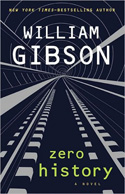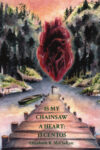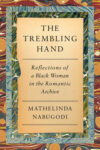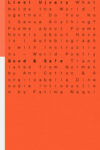by Jesse Montgomery
That old saying (and secret dictum of science fiction) “the future is now” is rarely as appropriate a descriptor as it is for William Gibson’s latest novel, Zero History. The third, and perhaps final, installment in his first series of this new century, Zero History takes place in the same near future world as its predecessors, Pattern Recognition (2003) and Spook Country (2007).
Having established himself as one of our finest dealers of far-flung futures, Gibson’s decision to set his first novels of the new century in a future barely distinguishable from the present came as something of a surprise. Gone were the razor girls, neural uplinks and dope-smoking Rastafarian spaceship pilots we’d come to expect, and in their stead are viral internet footage, transnational marketing conspiracies and a 9/11-induced cultural tinnitus, the nascent whine of the old rhythms of the world unfurrowing. In Zero History, the future feels more like the now than ever before.
The novel follows Hollis Henry (an ex-rock’n’roller for a band regrettably named The Curfew) and her partner, a recovering benzo addict named Milgrim, as the pair attempts to track down the source of Gabriel Hounds, a secret clothing brand, at the behest of their boss, Hubertus Bigend (a Belgian supercapitalist who, regrettably, may be sort of evil). As the pursuit of the elusive brand plays out, the situation complicates and our heroes find themselves in the crosshairs of a rogue U.S. Army general hellbent on entering the fashion world by way of an international conspiracy he engineers to effect his debut.
Heady, fun and ultimately overextended, Zero History is all at once a branding thriller set in the worlds of high, low, and subterranean fashion, a military-industrial mystery and a late-capital elegy for the permanent and the durable. Unfortunately, the novel exhibits some serious tension between the realms of the macro and the micro. Gibson excels when he’s tripping along lightly in the rarefied air of Big Ideas and riffing about late capital, but he struggles to create characters that feel real or compelling. Hollis in particular reads as flat, too often acting only as a conversational foil for Bigend, who must periodically descend, Zeus-like, from the heavens in order to tidily advance the story. Even worse are her friends who keep popping up in the book and saving the day with their inexplicable expertise in martial arts or BASE jumping. Milgrim, too, suffers from a lack of development — but as the mouthpiece for our uncertainties concerning the technologies and potentials of the contemporary moment, he plays a role in line with the chief strength of the novel: teasing out the strangeness of the world in which the characters exist.
This world – one in which characters bump up against the secret machinations of history, semi-autonomous capitalist currents, and the rare pocket of human authenticity untainted by runaway consumerism – owes a lot to older, lefty, big picture thinkers like Thomas Pynchon and Frederic Jameson (as odd as that pairing might seem), and is the real star of the novel. Aside from Bigend and Milgrim, Gibson’s characters are mostly grist for this mill. They feel like plug-ings, quick fixes to problems in the plot rather than participants in its development. Their world, however, is vibrant and alive, and with it Gibson proves himself to be as promising a denaturalizer of our present as he is a predictor of our future.
This post may contain affiliate links.








